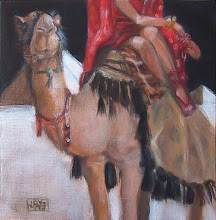| ||
 | ||
| ||
| |
| ||
Turkish town cashes in on Saint Nick legacy
The land Saint Nicholas is originally from rarely sees snowflakes -- it is a village of palm trees and orange groves on the Mediterranean Sea in what is modern-day Turkey. Nicholas, patron saint of sailors and children, lived and died there nearly 18 centuries ago. The legend of the 4th century bishop who gave gifts to the poor has spread since the earliest days of Christianity. Eventually, Saint Nicholas evolved from the bald and bearded man depicted in Orthodox icons -- dressed in long robes and clutching a bible -- to the more rotund and secular character of jolly old Saint Nick. Though Santa Claus is today inextricably intertwined with Christmas, hardly any of the residents of Saint Nicholas' hometown celebrate the holiday. Demre is an overwhelmingly Muslim town where the call to prayer periodically echoes from minarets over the sun-bleached stones of chapels and a sprawling Roman amphitheater that was constructed long before the days of Saint Nicholas. "Nobody celebrates Christmas here. It's interesting," said Baris Yuksel, speaking in his shop amid a sea of gold-framed icons of Saint Nicholas -- a man locals know here as "Noel Baba," or Father Christmas. Like many other residents of Demre, Yuksel grows and exports tomatoes from some of the many greenhouses that surround this small community. But in recent years he has also made a lucrative business selling images of Demre's most famous son to the hundreds of thousands foreign tourists who visit the Church of Saint Nicholas every year. "We are so happy with Saint Nicholas," Yuksel said. "After lots of centuries we are earning money thanks to Saint Nicholas." Demre's gratitude is evident in the town's official logo -- which features the familiar bearded face of Santa Claus -- and a bronze statue of a slimmer Saint Nicholas holding hands with two smiling children, which overlooks the central town square. The man behind the legend is believed to have died in Demre in 343 AD, when the city was then known as Myra and many of the inhabitants spoke ancient Greek. "Nicholas is a real man. He lived here and he died here, and he talked about Christianity in a widespread area," said Nevzat Cevik, a Turkish archaeologist unearthing history about one of the world's earliest Christian civilizations. Cevik said Nicholas of Myra was a Christian bishop, who is depicted in ancient engravings chopping down a tree that symbolizes the region's earlier pagan Roman religion. "He destroyed pagan temples also," Cevik said, referring to the Temple of Artemis, which is believed to have been razed to the ground on Nicholas' order. "They destroyed the pagan buildings ... and then they used the materials of those buildings to build their churches." As evidence, Cevik points to a 12th century Byzantine chapel his team recently discovered buried next to the house of an elderly Turkish man named Ahmet Gezer, whose bushy white beard was surprisingly Santa shaped. Part of the floor of the chapel is constructed out of stones pillaged from the sarcophagi of earlier pagans. After his death, Saint Nicholas was honored as a martyr. Cevik argues that his legend began to grow after it was retold by another Christian priest named Nicholas of Sion, who lived in the area more than 100 years after Saint Nicholas' death. Cevik theorizes that Christian believers began combining the stories of the two men named Nicholas. "After the 6th century AD, there are 2 Nicholases in one figure," Cevik said. "They come together and we know only one Saint Nicholas." In subsequent centuries, the tomb of Saint Nicholas became a place of pilgrimage for Christians traveling from around the Mediterranean Sea. Gradually, other European cultures adopted the popular saint, and added their own twists to his image. The Santa Claus we see today appears to have evolved out of a Scandinavian version of the saint, who was later popularized by 19th century American writers and U.S. companies like Coca Cola, which used Santa's image to promote their products. The mayor of Demre is a big fan of this contemporary Santa Claus, which some Turks refer to as the "Coca Cola Santa." "Indeed, he is something that the Americans invented," said Mayor Suleyman Topcu, "[but] he is nice and colorful." Topcu said he planned to put a big red Santa statue up overlooking the new street and beach he recently named after Father Christmas. But some of Demre's younger residents want to set the record straight on their town's most famous son. "He didn't have magic powers or flying reindeer. That's only in the cartoons," said 10-year old Habip Erdogan. His friend, Batuhan Katilimis, also 10, said: "He was a good man who gave gifts." No matter what version you believe in, everyone in Demre seems to agree -- it is the spirit of Saint Nicholas giving to those who are in need that is the legendary man's most enduring legacy. |
| Links referenced within this article |
| Find this article at: http://edition.cnn.com/2010/WORLD/europe/12/21/turkey.saint.nicholas/?hpt=Sbin |
© 2008 Cable News Network.














No comments:
Post a Comment